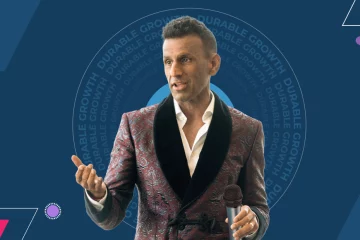
“Creepy Hitchhiker: You heard of this thing, the 8-Minute Abs?
Ted: Yeah, sure, 8-Minute Abs. Yeah, the exercise video.
Creepy Hitchhiker: Yeah, this is going to blow that right out of the water. Listen to this: 7… Minute… Abs.”
Let’s do some word association. If I say “lean,” what do you think of? How many guesses until you say “my IT department?” I’m assuming we would be here a while.
In case you have lived under a rock the last few years, Lean Startup is a new approach to building and launching products and services, originally created by Eric Ries. Eric borrowed concepts from the “lean manufacturing” approach created decades ago and tried to generalize them to all types of innovation. And Lean Startup is truly a movement, with a packed audience of in-person attendees at Ries’ San Francisco conference this week and simulcasts of the event held around the world.
And while people have talked about applying the principles of lean manufacturing to IT for some time, look around your typical IT department and tell me if you see lean in practice. Indeed, I remember visiting a Fortune 500 IT department a few years ago on one of my many redeye-bleary customer visits and asking them about the rollout of a new project they were working on (unrelated to my company). The quote that struck me was:
“The product is great. It’s achieved all of it’s goals. The only drawback has been user adoption.”
How can an IT rollout (which is presumably for the users), be successful without the minor issue of “user adoption”?
IT teams need to lean (no pun intended) on the following concepts from Lean Startup to get relevant:
- Define the goal. Eric Ries nicely articulates the goal of a startup: “The goal of a startup is to figure out the right thing to build-the thing customers want and will pay for-as quickly as possible.” What is the goal of IT? Many IT teams have vague slogans like “align with the business” or “add value to the business.” Often missing is the focus on speed, value and users. IT departments need to rewrite their mission statements for the modern world.
- Introduced validated learning. A big theme amongst Lean Startup advocates is the idea that learning, in the short-term, is more important than tactical results. In this spirit, how often are IT teams using projects as an opportunity to learn about their users versus just “getting the project done”? IT leaders need to move beyond only bringing up project plans and delivery dates with their teams and toward a celebration of continuous learning.
- Develop innovation accounting. Ries also coined the term innovation accounting, which entails a relentless focus on metrics to capture where a project is today, what the ideal state is and how to measure progress toward the ideal. Lean Startup encourages folks to shy away from “vanity metrics” like “total users” and instead target the underlying variables that drive success (e.g., engagement of a cohort of users). IT project teams need to understand the core drivers for success of their project (e.g., # of times a users logs into an app per week, # days before a user gets productive with an app), quantify the goals for those drivers and then develop systems to measure the numbers.
- Create an MVP. Lean Startup advocates have figured out that they can learn a lot and eliminate a great deal of wasted time by first understanding the most important question in the hypothesis of success around their project and then designing a very simple experiment, called a Minimal Viable Product (MVP) to test that hypothesis. The experiment could be a stripped down product but it could even be a sample email invite or a UI mockup. The idea is to de-risk the project upfront by getting as much input into the hypothesis as possible at the beginning. For IT, this might mean testing registration pages or email invites for new applications before even building the applications – to determine if, when they finally build the app, anyone will care.
- Don’t be afraid to pivot. Too many IT projects go on like ghost trains, with no one driving them and even fewer people using them. The project ends up showing up as “complete” on a status report but in hindsight, it turns out the whole concept was ill-fated. Rather than managing projects end-to-end, IT teams need to use MVPs, rapid iteration and innovation accounting to determine when it’s time to “pivot” and change course on a project that’s going down the wrong path.
The truth is that Lean Startup is happening in IT – it’s just happening by the users. As they bring their own devices and applications, users are voting with their feet and showing that if IT doesn’t get more lean and responsive, they will cut them out of the picture altogether. And yet there is a big role for IT to align projects with the overall company strategy – if they can evolve the way they execute. Better start doing some crunches!



